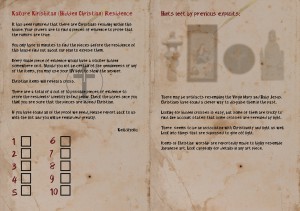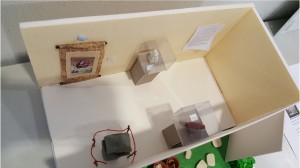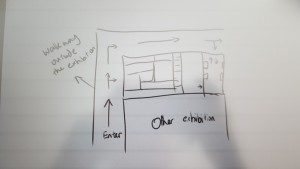[Late Post] Activity Area for our Exhibition
This is a delay post, as initially my group members and I didn’t want to reveal everything about our exhibition before the day we showcase it. My concept for the activity area was derived from board games such as Cluedo and Escape Room. Collectively, as a group, our concept was to create a memorable learning experience for our visitors at the same time unveil the history of “Hidden Christianity in Japan”, a culture known to many but understand by few. The setting of the area will bring our visitor back to 1600s, this will allow them to have a 4-dimension experience.
How will the activity be carried out?
The whole activity, which is being held within the exhibition premise, will last for 10 minutes. Due to space constraint, every 10 minutes interval, a maximum number of 5 visitors will be allowed into the premise.
Visitors will be given the roles of government officers and they will be tasked to search items relating to Christianity within the premise. These “Government officers” will be “armed” with UV lights and a scroll like “search list” which will contain clues on the hidden items.
A total of 10 items will be hidden within the premise, of which only 4 are related, the rest are just to confuse our “officers”. In order to complete their task, the “officers” will need to recover all 4 hidden items that are related to Christianity. The 4 hidden items will have a sticker that has a cross using UV ink, therefore, our “officers” will need to utilize their UV light to identify the “real items”
To ensure that all visitor, regardless of whether they have prior knowledge to Christianity or not, are able to find the 4 hidden items, the clues will be given in a descriptive style. For an example;
- Item 1:
- In a form of Virgin Mary and Baby Jesus
- Made of Dehua white porcelain…etc.
Upon completing their task, visitors may proceed over to the next section of the exhibition. A film, which depicts the execution of Christianity, will be shown to them. Besides gaining more insights to “Hidden Christianity in Japan” visitor will be gifted with the scrolls, as a souvenir. If they did not complete the task, they will be able to view the artifact at the gallery. Explanation of the artifacts will also be provided within the gallery.
For visitors who do not wish to participate in the activity, they can make a detour to the gallery, which they can roam freely on their own.
Here is the first draft of the scroll content:
Kirishitan (Hidden Christian) Belongings
There are rumours that there are Kirishitan within this house. Please find the 4 evidence to prove that the rumours are true. There is only 10 minutes to find the evidences before the residence of this house find out about our plan to expose them. Every evidence would have a sticker hidden somewhere on it. Please note that the evidence must have this image of a cross on when you use your UV light on the sticker as there may be a fake version of it where there is no cross on it. There are a total of 4 evidences to prove their identity and they are listed below. Each number represents the evidence, so please make sure that the evidence’s number is similar to this scroll’s numbering.
If you have found all of the evidences, please report back to us with all the evidence layout on the table and you will be rewarded greatly.
– Keihōkyoku
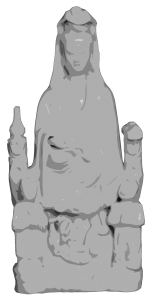
- Dehua Kilns Maria Kannon
Clues:- Made of Dehua white porcelain
- In a form of Virgin Mary and Baby Jesus
- Depicted as Kannon feminine form Koyasu Kannon (子安観音) that means child giving and child rearing, which resemble “Byakue Kannon” in appearance but she is holding a child.
- A Christian cross is often hidden behind the statue
- It disguised as the Buddhist deity Kannon (Goddess of Mercy) in order to conceal the Christian faith while pretending to be Buddhist
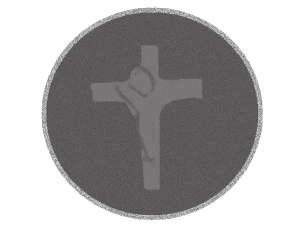
- MAKKYO(魔鏡), The Magic Mirror
Clues:- Made of bronze
- Used as an Christian identity
- One side brightly polished, other side bronzed surface
- Your reflected image can be seen on it when viewing
- Shining light directly onto the shiny panel, angled in such a way that by reflecting it on a flat surface, an image of either a crucifix, a figure of Jesus Christ or Virgin Mary would appear
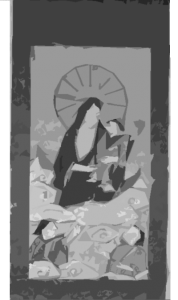
- Hidden Wall Scroll of Virgin Mary and Baby Jesus
Clues:- In a form of Kakejiku
- Use as a form of worship to deities and also as a decorative adds on to their interior design.
- Virgin Mary and Baby Jesus depicted in the artwork
- Painted in the Shinto style – pale spotless skin, dark raven hair, narrow eyes and minimalistic noses, eyebrows.
- Littered with Japanese Motifs: Mary with exposed breasts, sat with the cloudsà depiction of immortality
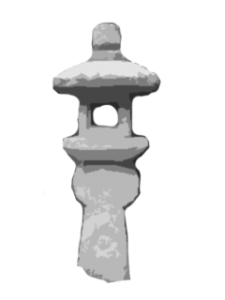
- Kirishitan Doro
Clues:- A form of an Oribe lantern with a figure of Virgin Mary, that resemble Kannon (Goddess of Mercy), carved near the base
- A Greek monogram “IHS” (iota-eta-sigma, the initials of the Greek form of the name Jesus) which is inscripted below the central platform
- Made by Furuta Oribe, famed designer, tea ceremony master and warlord of the Momoyama period (15686 – 1693)
- Function as lighting devices and secret sign of being a Christian
- Usually found in household gardens as to light the way from main residence to the teahouse.
————————————————————————————————————————————
This is the remake version after discussion:
